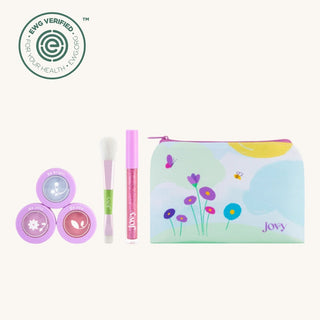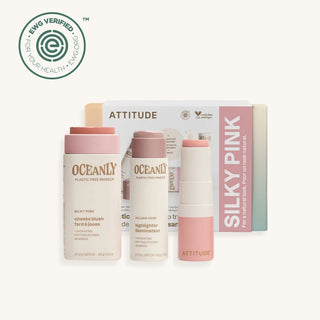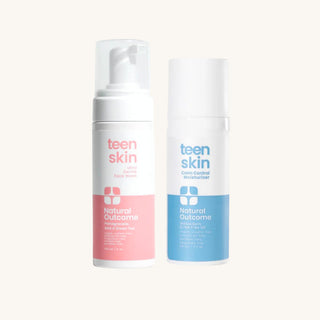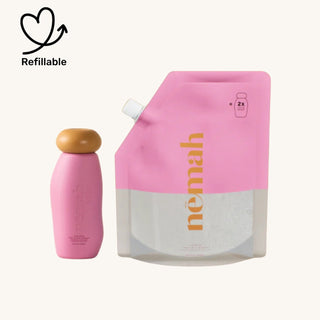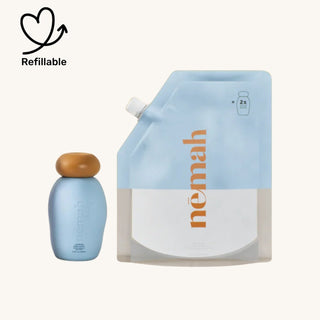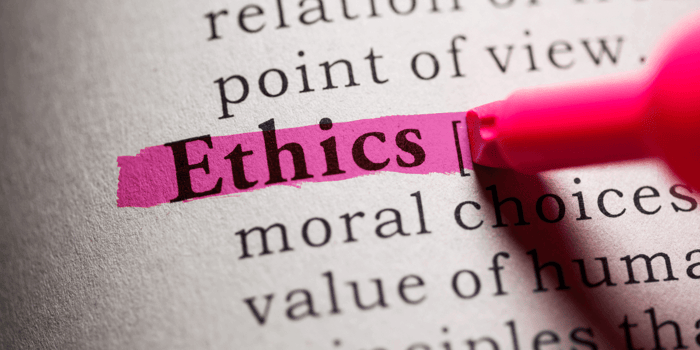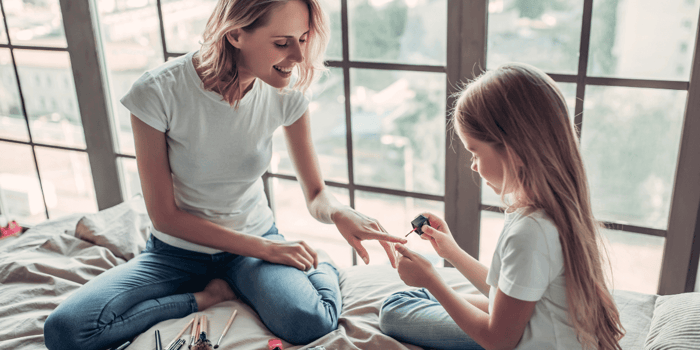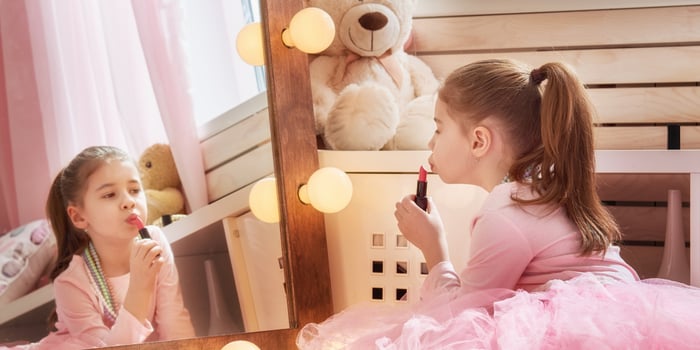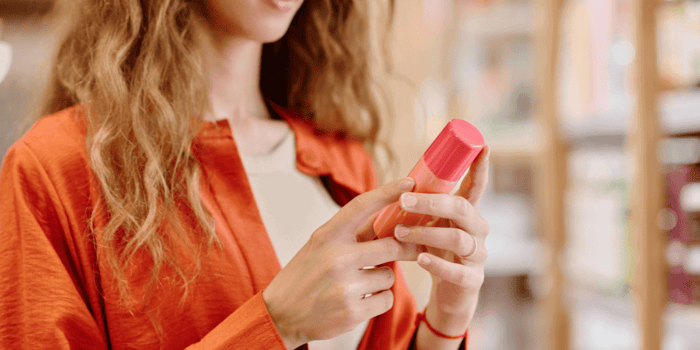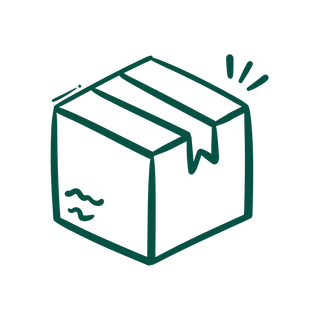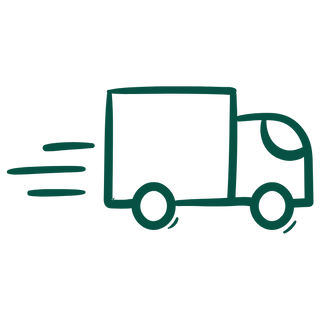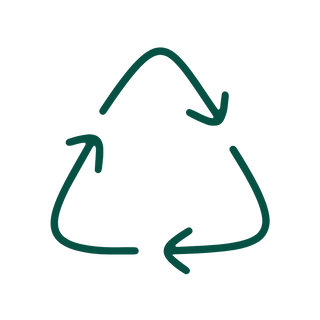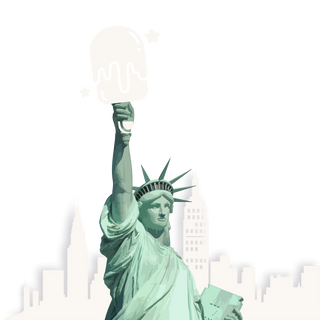What To Expect In This Blog Post
Introduction
- Why does non-toxic beauty matter for kids? Understanding how ingredients, regulations, and ethics impact the safety of children’s makeup.
- The difference between mainstream and non-toxic beauty—what parents need to know.
Section 1: How Kids’ Makeup Is Made
Many parents assume that kids' makeup is held to the same safety standards as adult cosmetics, but that's not always true. Here’s what happens behind the scenes:
🔹 1.1 The Difference Between Play Makeup & Regular Cosmetics
- Kids’ makeup is often labeled as "toy cosmetics" rather than actual beauty products, meaning it may not be regulated as strictly.
- Some "play makeup" brands use cheap fillers and synthetic dyes, while truly non-toxic brands prioritize clean ingredients.
🔹 1.2 The Manufacturing Process: What’s Really Inside?
- How mainstream makeup brands choose preservatives, dyes, and fragrances to enhance shelf life.
- The role of natural and mineral-based alternatives in clean beauty.
Section 2: The Science Behind Non-Toxic Beauty
Understanding how ingredients interact with young, sensitive skin is crucial for making safe choices.
🔹 2.1 The Skin Barrier & Kids’ Sensitivity
- Children’s skin is thinner and more absorbent, making them more vulnerable to toxins.
- Why some ingredients banned in the EU are still legal in U.S. cosmetics.
🔹 2.2 Are Natural Ingredients Always Safe?
- The misconception of "natural" beauty—why some plant-based ingredients can still cause irritation.
- Understanding synthetic vs. natural preservatives and which ones are safest.
Section 3: Ethical Beauty for Children
Non-toxic beauty isn’t just about avoiding chemicals—it’s also about choosing brands that prioritize ethics, sustainability, and safety.
🔹 3.1 What Does “Ethical Beauty” Really Mean?
- The three pillars of ethical beauty:
- Ingredient transparency
- Cruelty-free practices
- Sustainable & eco-friendly packaging
🔹 3.2 Cruelty-Free vs. Vegan: What’s the Difference?
- Some brands claim cruelty-free status but still use animal-derived ingredients like carmine (crushed beetles) or lanolin (sheep’s wool oil).
- Understanding certifications like Leaping Bunny, PETA, and Made Safe®.
Section 4: Greenwashing & Misleading Clean Beauty Claims
With more parents demanding non-toxic products, brands have started greenwashing—using misleading claims to appear safer than they really are.
🔹 4.1 What Is Greenwashing & How to Spot It?
- How brands use vague terms like "clean," "natural," and "hypoallergenic" without regulation.
- The truth about "paraben-free" and "organic" marketing—what these labels actually mean.
🔹 4.2 Hidden Toxic Ingredients in So-Called “Clean” Beauty
- The most common greenwashing tricks, including:
- “Paraben-Free” but contains Phenoxyethanol
- “Fragrance-Free” but still uses synthetic scent molecules
- “Organic Ingredients” but only a tiny percentage is actually organic
Section 5: How to Identify Truly Safe Beauty Products
Now that we understand the science and ethics behind non-toxic beauty, how can parents make sure they’re choosing the safest options?
🔹 5.1 Reading Ingredient Labels Like a Pro
- The importance of full ingredient disclosure—how to spot hidden chemicals.
- Why EWG Skin Deep, Think Dirty, and Made Safe® certifications help verify a product’s safety.
🔹 5.2 What to Look for in a Truly Clean Beauty Brand
- Choosing brands that prioritize safety, sustainability, and transparency.
- Supporting companies that use ethical sourcing and eco-friendly packaging.
Conclusion: Why Science & Ethics Matter in Non-Toxic Beauty
- Understanding how kids' makeup is made helps parents make informed decisions.
- Non-toxic beauty isn't just about ingredients—it’s about choosing ethical brands that prioritize safety, transparency, and sustainability.
- By educating ourselves on greenwashing tactics and misleading claims, we can demand better from the beauty industry.
Introduction: Why Science & Ethics Matter in Non-Toxic Beauty
As parents, we go out of our way to ensure that everything our kids use is safe, gentle, and free from harmful chemicals—but when it comes to children’s makeup, the truth is often more complicated. Many brands market their products as “non-toxic,” “natural,” or “hypoallergenic,” yet still include hidden toxins, synthetic dyes, and questionable preservatives. Even more concerning, some play makeup brands fall under toy regulations rather than cosmetic safety standards, making it even harder for parents to know what’s truly safe.
Beyond ingredient safety, the ethics behind kids’ beauty brands also deserve attention. Is a product really cruelty-free, or does it contain animal-derived ingredients like carmine (a red pigment made from crushed beetles)? Is it paraben-free, or did the company replace parabens with phenoxyethanol, a known skin irritant? And what about greenwashing—when companies use misleading marketing terms to make their products seem cleaner than they really are?
This guide dives into the science behind non-toxic beauty and what parents need to know about how kids’ makeup is made, the ethics of clean beauty, and how to spot misleading claims. By understanding what’s actually inside play makeup, we can help children explore beauty in a way that is safe, ethical, and empowering—without compromising their health.
Section 1: How Kids’ Makeup Is Made
Most parents assume that kids' makeup is held to the same safety standards as adult cosmetics, but the reality is far more concerning. Many children’s makeup products fall under toy regulations rather than cosmetic safety laws, meaning they don’t always require the same rigorous testing. While some brands prioritize natural, non-toxic ingredients, others cut corners by using cheap fillers, synthetic dyes, and preservatives that would never be allowed in high-quality adult beauty products. This is why some play makeup kits, especially those sold in discount stores, have been found to contain traces of lead, asbestos, and other toxic substances.
One major issue is ingredient transparency. In many countries, toys—including play makeup—aren’t required to fully disclose their ingredients the way cosmetics are. This loophole allows brands to use low-quality colorants, artificial fragrances, and unregulated preservatives without parents realizing it. For example, a brand might advertise a product as "paraben-free" while still using phenoxyethanol, a preservative that has been linked to skin irritation and nervous system toxicity. This lack of regulation means that unless a company voluntarily lists all ingredients and commits to clean formulations, parents might unknowingly expose their kids to harmful substances.
Another concern is how color is created in kids’ makeup. Many traditional products rely on FD&C synthetic dyes (such as Red 40 or Yellow 5), which are derived from petroleum and have been linked to hyperactivity and allergic reactions. In contrast, truly non-toxic brands use plant-based pigments, fruit extracts, or mineral-based colorants to create safe, vibrant shades. However, even "natural" brands may not always be ethical—some use carmine (a red pigment made from crushed insects) while still labeling their products as cruelty-free.
So, how can parents ensure they’re choosing safe, ethical, and non-toxic play makeup? The best approach is to look beyond the marketing claims and check the full ingredient list. If a brand doesn’t disclose all ingredients or uses vague terms like "fragrance" or "colorants," it’s a red flag. Additionally, supporting brands that adhere to strict safety certifications (such as EWG Verified™, Made Safe®, or USDA Organic) can provide extra reassurance that a product is free from hidden toxins and misleading claims.
Section 2: The Science Behind Non-Toxic Beauty
When it comes to kids’ play makeup, understanding the science behind non-toxic beauty is just as important as knowing which ingredients to avoid. Children's skin is thinner, more sensitive, and more absorbent than adult skin, making them even more vulnerable to toxic chemicals, allergens, and hormone-disrupting ingredients. Many mainstream beauty products contain synthetic dyes, parabens, talc, and artificial fragrances, which can be absorbed into the bloodstream through the skin or ingested when kids lick their lips. This is why choosing truly safe, non-toxic formulations is critical.
One of the biggest misconceptions in clean beauty is that natural always means safe. While it's true that plant-based ingredients are often gentler, some can still cause irritation or allergic reactions. Essential oils, for example, are commonly used as natural fragrances, but certain types (like cinnamon or citrus oils) can be too harsh for young skin. Similarly, mineral-based pigments are often a safer alternative to synthetic dyes, but if not properly sourced, some can contain trace amounts of heavy metals. This is why third-party safety testing and full ingredient transparency are essential when evaluating a brand's safety claims.
Another concern is preservatives. Since kids' makeup often sits in drawers for months, it needs some form of preservative system to prevent bacterial growth. Unfortunately, many companies replace traditional parabens (which have been linked to endocrine disruption) with phenoxyethanol, a preservative that can still cause skin irritation and toxicity in high doses. Truly non-toxic brands opt for safer alternatives, like radish root ferment, sodium benzoate, or vitamin E (tocopherol), which help extend shelf life without compromising safety.
The final piece of the puzzle is regulation—or the lack of it. The U.S. has much looser cosmetic regulations than Europe, where over 1,600 chemicals are banned in beauty products compared to only about 30 in the U.S.. This means that even if a product is legally sold in stores, it may still contain harmful or untested ingredients. Countries like Canada and the EU require more rigorous safety testing and disclose potential allergens, while the FDA does not require pre-market testing for most cosmetics, including kids' makeup.
Understanding the science behind non-toxic beauty means knowing how ingredients interact with the skin, why some natural ingredients aren’t always better, and how regulatory loopholes allow harmful chemicals to slip into children’s products. The best way to ensure a product is safe is to choose brands that are transparent about their ingredients, use science-backed safety standards, and undergo independent testing to verify that their formulas are truly clean and non-toxic.
Section 3: Ethical Beauty for Children
When we think about non-toxic beauty, we often focus on avoiding harmful chemicals—but ethical beauty goes beyond just safe ingredients. It also considers how a product is made, whether it harms animals, and whether the brand supports sustainable, cruelty-free practices. Many companies claim to be "clean" or "green," but their products may still contain animal-derived ingredients, unsustainable packaging, or exploitative sourcing practices. For parents who care about both ingredient safety and ethical production, understanding what makes beauty products truly ethical is just as important as knowing what’s inside them.
One of the most misleading terms in beauty is "cruelty-free." While it sounds like a guarantee that a product was made without harming animals, the reality is more complicated. A brand can be certified cruelty-free because it doesn’t test on animals, but it may still use animal-derived ingredients like carmine (a red pigment made from crushed beetles), lanolin (from sheep’s wool), or beeswax. Many parents assume that a Leaping Bunny-certified product is free from animal exploitation, but that certification only applies to animal testing, not ingredient sourcing. This means a brand could be cruelty-free while still relying on ingredients that require killing insects or using animal byproducts.
Another ethical issue in beauty is ingredient sourcing and environmental impact. Some natural ingredients, while safe, are harvested in ways that damage ecosystems or exploit workers. Mica, a mineral often used for shimmer in eyeshadow and highlighters, has been linked to child labor in unregulated mines in India and Madagascar. Some brands now use ethically sourced or synthetic mica to avoid these concerns, but many clean beauty brands still use untraceable mica while marketing their products as "natural" or "pure." Parents looking for truly ethical brands should seek those that prioritize fair-trade, traceable ingredient sourcing and commit to transparent supply chains.
Sustainability is another key part of ethical beauty, particularly when it comes to packaging waste. Many kids’ beauty brands rely on single-use plastics, bulky packaging, and non-recyclable materials, which contribute to environmental pollution. Ethical brands focus on biodegradable, refillable, or recyclable packaging, reducing their footprint without compromising safety. For example, some brands now use compostable paper tubes for lip balms or glass jars instead of plastic for powders. Parents who want to make eco-conscious choices should look for brands that minimize plastic waste and prioritize sustainable materials.
At the heart of ethical beauty for children is the idea that makeup should be safe, responsible, and aligned with values that promote kindness—to both people and the planet. By choosing brands that are truly cruelty-free, committed to ethical ingredient sourcing, and mindful of sustainability, parents can ensure that their child’s play makeup is not only non-toxic but also ethical in every step of its production.
Section 4: Greenwashing & Misleading Clean Beauty Claims
As demand for non-toxic and ethical beauty products grows, many brands have started using buzzwords like "natural," "clean," and "safe" to appeal to parents who want healthier options for their children. However, not all brands that claim to be clean actually live up to those standards. Greenwashing is a marketing tactic where companies make false or exaggerated claims about the safety, sustainability, or ethical nature of their products to mislead consumers. Parents who don’t carefully read ingredient lists and certifications may unknowingly purchase products that still contain toxic chemicals, synthetic dyes, or unethical ingredients.
One of the most common greenwashing tricks is labeling a product as "natural" or "hypoallergenic" without providing any real proof. The beauty industry is not heavily regulated, and brands are free to use these terms without meeting any legal standards. A product labeled "natural" may still contain artificial preservatives, synthetic dyes, and petroleum-based ingredients, while "hypoallergenic" only means it’s less likely to cause allergic reactions—not that it’s free from potential irritants. Parents looking for genuinely safe beauty products should check the full ingredient list rather than relying on front-label claims.
Another misleading tactic is highlighting the absence of one harmful ingredient while including others. Many brands now advertise “paraben-free” formulas, but instead of using safe, natural alternatives, they replace parabens with phenoxyethanol—a preservative linked to skin irritation and potential nervous system effects. Similarly, some companies market their products as “fragrance-free” but still use hidden scent chemicals labeled as "aroma" or "botanical extract" that may contain synthetic components.
A particularly deceptive form of greenwashing is the use of organic claims without full certification. Some brands list organic ingredients on their labels, leading parents to believe the entire product is organic. However, unless a product carries a USDA Organic or ECOCERT certification, it may still contain synthetic fillers, artificial colors, and chemical preservatives. A truly organic product will specify that it is “100% organic” or “certified organic,” rather than simply stating it contains organic ingredients.
One of the trickiest greenwashing strategies is the misuse of cruelty-free claims. A product may be labeled as “not tested on animals” and certified cruelty-free, yet still contain animal-derived ingredients like carmine (from crushed beetles), lanolin (from sheep’s wool), or beeswax. Since cruelty-free certification only applies to animal testing, many brands use animal-based ingredients while still promoting their products as ethical. Parents looking for truly vegan and cruelty-free options should verify that a product carries both cruelty-free and vegan certifications to ensure it does not contain hidden animal-derived ingredients.
Understanding greenwashing tactics helps parents make informed choices and avoid falling for misleading marketing. The best way to ensure a product is truly non-toxic and ethical is to read the full ingredient list, check for independent third-party certifications (like EWG Verified™ or Made Safe®), and research the brand’s transparency practices. By looking beyond the label and choosing brands that are genuinely committed to clean beauty, parents can ensure that their child’s play makeup is both safe and responsibly made.
Section 5: How to Identify Truly Safe Beauty Products
With so many misleading marketing claims in the beauty industry, finding truly safe, non-toxic play makeup can feel overwhelming. Parents who want to ensure their child’s makeup is genuinely clean and ethical need to go beyond the front-label buzzwords and focus on ingredient transparency, third-party certifications, and brand ethics. By learning how to properly evaluate product labels, parents can confidently choose beauty products that are free from hidden toxins, ethically sourced, and safe for young skin.
The first step in identifying safe beauty products is to read the full ingredient list, not just the claims on the packaging. Brands often highlight a few clean ingredients, like "organic coconut oil" or "natural fruit extracts," while still including synthetic preservatives, petroleum-based dyes, or hidden fragrance chemicals. Instead of relying on claims like "natural" or "hypoallergenic," parents should look for specific ingredients to avoid—such as parabens, synthetic dyes (FD&C colors), talc, artificial fragrances, and phenoxyethanol. A good rule of thumb is: if an ingredient list is overly long and contains words that sound like chemical compounds, it’s worth researching further.
Another reliable way to verify a product’s safety is to look for independent third-party certifications. Labels like EWG Verified™, Made Safe®, and USDA Organic indicate that a product has undergone strict testing for harmful chemicals. However, not all certifications are equal—some brands use their own “green” seals that have no real regulatory backing. Parents should research which certifications have credibility and avoid products that rely solely on self-made or meaningless eco-labels.
Ethical sourcing and transparency also play a key role in finding truly safe beauty products. A responsible brand will not only disclose all ingredients but also provide clear sourcing information, including whether ingredients like mica (used in shimmery makeup) were ethically mined and whether the packaging is sustainable or biodegradable. Ethical brands will often have fair-trade partnerships and cruelty-free or vegan certifications, ensuring that their products do not exploit workers, animals, or the environment.
In addition to reviewing ingredients and certifications, parents can use ingredient safety databases like the EWG Skin Deep Database or the Think Dirty app to cross-check specific products. These tools provide toxicity ratings for cosmetics and personal care products, helping consumers identify whether a brand is truly clean or if it contains hidden harmful chemicals.
Ultimately, the best way to ensure a product is truly safe is to support brands that prioritize full transparency, ethical sourcing, and scientifically backed safety standards. By choosing non-toxic, cruelty-free, and sustainably packaged makeup products, parents can feel confident that their child’s beauty routine is both safe and responsible.
Conclusion: Raising the Next Generation of Clean Beauty Lovers
As parents, we want to encourage our children’s creativity and self-expression while ensuring that the products they use are safe, ethical, and truly non-toxic. The beauty industry, particularly when it comes to kids’ products, is filled with misleading marketing, hidden toxins, and greenwashing tactics that make it difficult to know which brands to trust. By understanding how kids' makeup is made, the science behind ingredient safety, and the ethics of clean beauty, we can make informed choices that protect our children’s health and support responsible brands.
The key to raising the next generation of clean beauty lovers isn’t just about choosing safer products—it’s about teaching kids to be mindful consumers. When we educate them on what goes into their makeup, why ingredient transparency matters, and how brands use deceptive marketing, we empower them to make healthier choices as they grow. Clean beauty isn’t just a trend—it’s a shift toward healthier habits, ethical sourcing, and sustainability that can have a lasting impact on both individuals and the environment.
By choosing truly non-toxic, ethically sourced, and transparently formulated beauty products, we set a new standard for what children’s cosmetics should be. Whether it’s reading ingredient labels, supporting responsible brands, or opting for DIY alternatives, every small step helps move the industry toward a future where beauty is both fun and safe.
